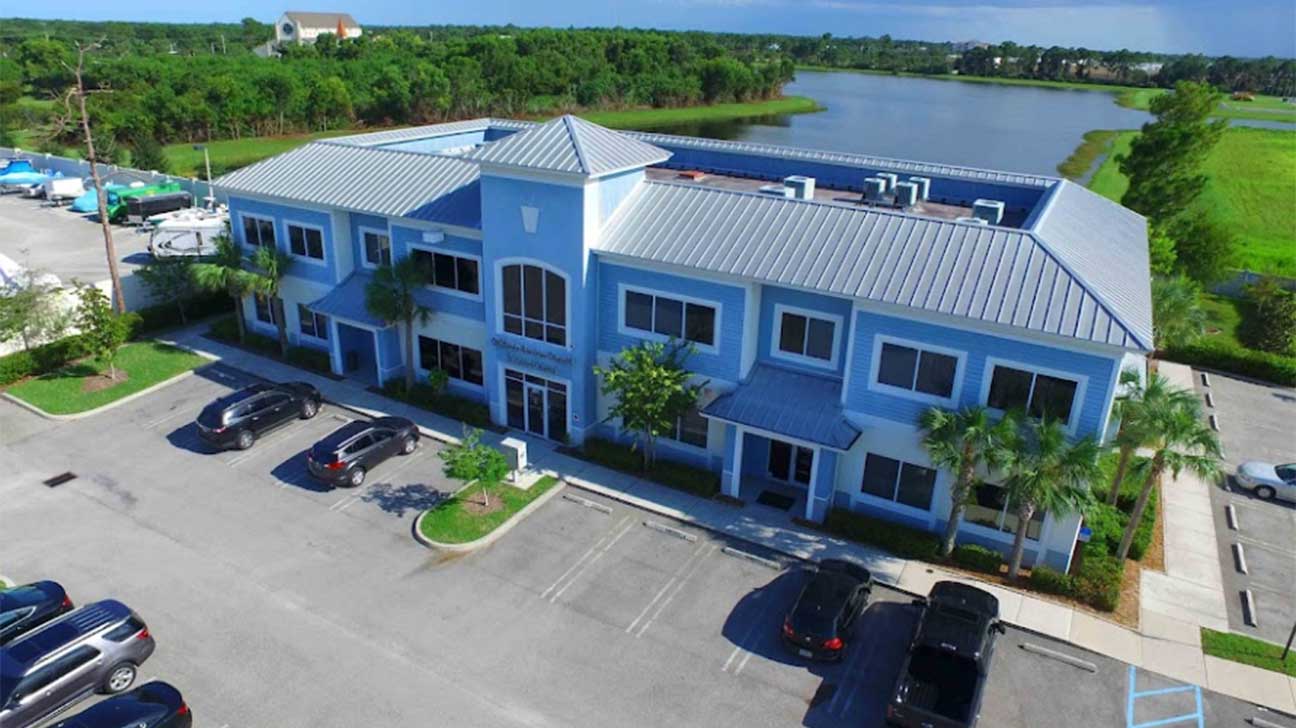
Entering rehab is not only a courageous but a life-changing decision that can lead to profound personal transformation. Taking the time to prepare thoroughly can help you make the most of your recovery journey, setting you up for success from the very start. Whether it’s your first time seeking treatment or you’re returning after a previous attempt, this step-by-step guide will walk you through each part of the preparation process to help you enter rehab with confidence, clarity, and the strong commitment needed for a successful recovery. By following the outlined steps, you’ll ensure you’re ready both mentally and physically to make the most of the life-changing experience ahead.
Step 1: Acknowledge the Need for Help
The first and most critical step on your path to recovery is acknowledging that you need help. Self-awareness and accepting this reality lay the foundation for the entire recovery process. Recognize that seeking treatment is a courageous decision toward a healthier, happier life. Understand that asking for help is a sign of strength, not weakness, and shows your commitment to making positive changes in your life. By accepting this reality, you take ownership of your situation and open the door to support, care, and guidance that can empower you to move forward.
Why Acknowledgment is the Catalyst for Change
Acknowledging the need for help is transformative. When you take that first step, you begin to break free from the cycle of denial or shame, both of which may have held you back from seeking support. Reflect on how addiction has impacted your life and use these reflections to fuel your desire for change. Surround yourself with positive influences—friends, family, or professionals who support your decision. The moment of acknowledgment is not just the beginning of recovery; it’s also the moment you reclaim control over your future and set yourself up for a life of growth, healing, and self-discovery.
Step 2: Research Rehab Options
Choosing the right rehab center is a critical decision that can significantly influence the success of your recovery journey. Not all rehab facilities are the same, so it’s essential to carefully research and select the one that aligns best with your needs and preferences. Start by considering key factors such as:
- Treatment Approaches: Some centers focus on traditional 12-step programs, while others integrate holistic therapies, alternative treatments, or dual diagnosis care for those with both addiction and mental health challenges.
- Location and Environment: The location of the rehab center can impact your experience. Whether you prefer a serene, remote setting to help you disconnect or a more accessible option close to home, finding an environment where you feel comfortable and safe is essential.
- Program Length and Structure: Rehab programs vary in length, from 30 days to several months. Consider which program length aligns with your recovery needs and lifestyle.
- Costs and Insurance: It’s essential to factor in the financial aspect of rehab, including insurance coverage and any out-of-pocket costs. Many centers offer sliding scales or payment plans to make treatment more affordable.
Key Factors for Choosing the Right Rehab Facility
After conducting thorough research, make sure to contact potential rehab centers directly to ask questions about their services, treatment methods, success rates, and available support systems. Speak with admissions staff to get an understanding of the programs offered and ask for references or success stories from previous patients. Visiting the facility, if possible, can help you assess the environment firsthand, ensuring it feels welcoming and supportive. By choosing the right rehab facility, you give yourself the best chance for long-term recovery and healing.
Step 3: Handle Financial and Practical Arrangements
Dealing with financial and logistical arrangements ahead of time will allow you to focus fully on your recovery. Addressing these practical matters can significantly reduce any stress that may arise during treatment. Some steps you may need to take include:
- Contact Your Insurance Provider: Ensure that you understand the extent of your insurance coverage for rehab treatment, including whether inpatient or outpatient care is covered, and ask about any limitations.
- Explore Payment Plans and Financial Assistance Options: If your insurance does not cover all the costs, inquire about payment plans or financial assistance available through the rehab center. Many centers also offer scholarships or sliding-scale fees based on income.
- Arrange Time Off from Work or School: If you are employed or attending school, make arrangements for time off. Let your employer or school know in advance so they can make necessary adjustments.
- Manage Household Responsibilities: Make plans for household tasks such as childcare, pet care, and bill payments. You may need to enlist the help of a trusted family member or friend to handle these responsibilities during your stay in rehab.
Financial Clarity as a Foundation for Success
Having financial and logistical matters in order before entering rehab can help you avoid distractions and focus entirely on your recovery. By creating a structured plan for how to manage your finances and responsibilities, you alleviate anxiety and ensure you are prepared for the journey ahead.
Step 4: Pack Thoughtfully
Most rehab centers provide a list of what to bring, but it’s important to pack carefully, keeping in mind the facility’s guidelines. Some common items you’ll likely need include:
- Comfortable clothing and personal hygiene items.
- Medications and a current list of prescriptions.
- Identification and insurance information.
- Personal items such as books, journals, or art supplies (if allowed).
It’s essential to avoid bringing prohibited items, such as alcohol, drugs, or electronics like phones or computers. These may be restricted to help you focus solely on your recovery. Consider bringing a comforting item like a family photo or a small token that reminds you of home to help you feel grounded during your stay.
The Importance of Packing with Intention
Packing thoughtfully reinforces your commitment to the rehab process. It helps you prioritize what’s truly important—your recovery—and ensures that you enter treatment feeling prepared and at ease. By following the facility’s packing list and avoiding distractions, you are mentally preparing yourself to fully engage in your healing journey.
Step 5: Prepare Mentally and Emotionally
Entering rehab can be an emotional experience. Preparing yourself mentally and emotionally can help you navigate any anxiety or uncertainty you may feel. Start by reflecting on your recovery goals and what you hope to achieve during your time in treatment. Consider talking to a trusted family member, counselor, or friend to help process your emotions. Practicing mindfulness, journaling, or meditation can also help calm your nerves and foster a positive mindset. Preparing emotionally means understanding that the road ahead might be challenging but also full of opportunities for growth.
Building Emotional Resilience for the Journey Ahead
Prepare to experience a range of emotions throughout your recovery journey. There will likely be ups and downs, and it’s essential to embrace this emotional journey rather than shy away from it. Developing emotional resilience before you enter rehab can help you handle the inevitable challenges with a positive outlook. Recognize that each step forward, no matter how small, is progress.
Step 6: Communicate with Loved Ones
It’s important to have open and honest communication with your loved ones about your decision to enter rehab. Sharing your plans with them ensures that they understand your needs and can offer the support necessary for your recovery. If possible, involve your family in any counseling or educational programs provided by the rehab center. Encouraging them to learn more about addiction and recovery can also help create a supportive, empathetic environment for your healing process.
The Power of Support from Loved Ones
Having the support of family and friends during rehab can significantly impact your recovery journey. Open communication helps build trust and understanding, making it easier to share your experiences and progress with those closest to you. When loved ones are part of your journey, they can provide the stability and encouragement you need to stay motivated.
Step 7: Tie Up Loose Ends
Before entering rehab, address any outstanding responsibilities or tasks to reduce stress during treatment. Some of the things you should take care of include:
- Paying bills or arranging for someone to handle your financial responsibilities.
- Notifying your employer or school about your absence.
- Securing necessary medical or legal documents that may be required during your stay.
Having a checklist of these tasks ensures that everything is taken care of before you go, leaving you with a sense of calm and focus. Assigning a trusted person to handle any unforeseen issues can also ensure your recovery remains uninterrupted.
Setting Yourself Up for Success
By taking the time to manage these responsibilities before entering rehab, you’re demonstrating your commitment to fully engaging in the treatment process. Handling logistics allows you to enter rehab with a clear mind and reduced stress, setting you up for long-term success.
Step 8: Adopt a Positive Mindset
Approach rehab with an open mind and a positive attitude. Recovery is a process that requires patience, persistence, and an understanding that setbacks may occur along the way. Trust in the expertise of the professionals guiding you and remain confident in your ability to create lasting change. By focusing on the opportunities recovery offers and visualizing the life you want to build, you’ll create a mindset that supports your growth and healing.
The Role of Positivity in Overcoming Challenges
Positivity can make a significant difference in your ability to overcome challenges. Viewing obstacles as learning opportunities rather than setbacks empowers you to keep moving forward. By maintaining a positive outlook, you’ll build resilience and stay committed to your recovery goals, even during difficult moments.
Step 9: Stay Committed
The key to long-term success in rehab is commitment. Once you’ve entered treatment, stay fully engaged in the program. Participate actively in therapy sessions, follow through with your aftercare plans, and make the most of the resources available to you. Keep in mind that recovery doesn’t end when you leave rehab—it’s a lifelong journey that requires continuous effort. Stay motivated by setting small, attainable goals and celebrating each milestone along the way.
Dedication as the Foundation of Long-Term Success
Consistency is crucial to maintaining recovery after rehab. Stay connected with your support system, attend aftercare services, and continue applying the tools and skills you’ve learned in rehab to your everyday life. With dedication, you can overcome future challenges and create a fulfilling life of recovery.
Final Thoughts
Preparing for rehab is an investment in yourself and your future. By taking the time to follow these steps, you are setting yourself up for a successful recovery journey. Remember, you are not alone—reach out to resources like Addiction Helpline America for support and guidance every step of the way. With determination, the right support, and the resources available to you, lasting recovery is not only possible but achievable.
Take the first step toward a brighter tomorrow by embracing the opportunity to heal and grow. While the path to recovery may present challenges, each step forward brings you closer to a life of freedom, health, and happiness. With persistence and support, you can achieve lasting recovery and rediscover the joy and fulfillment you deserve. Focus on the positive transformations ahead, and trust in your ability to create a healthier, more fulfilling life.
1. What should I bring with me to rehab?
Most rehab centers provide a list of items to bring, but essentials usually include comfortable clothing, personal hygiene items, medications with a list of current prescriptions, identification, and insurance information. Be sure to avoid bringing prohibited items like alcohol, drugs, or electronic devices. Some centers may also allow personal items like books or a journal, but it’s best to check the facility’s specific guidelines.
2. How do I choose the right rehab center for me?
When choosing a rehab center, consider factors such as the treatment approaches offered (e.g., 12-step programs, holistic therapies), the location, the program length, and the costs. It’s helpful to research online reviews, talk to former patients, and ask about insurance coverage or financial assistance. Visiting the facility in person, if possible, can also help you assess if it aligns with your needs and comfort level.
3. What if I can’t afford rehab?
Many rehab centers offer financial assistance options, including sliding scales or scholarships, to make treatment more affordable. It’s important to contact your insurance provider to understand coverage and inquire about payment plans. Some centers may also offer financing options. Additionally, exploring public programs or local charities may provide further assistance.
4. How can I mentally prepare for rehab?
Preparing mentally for rehab involves reflecting on your recovery goals, identifying the changes you want to make, and recognizing that the process may be emotionally challenging. It may help to talk to a trusted friend, family member, or counselor, and engage in activities like journaling, meditation, or mindfulness to ease anxiety. A positive and open mindset will better equip you for the challenges ahead.
5. Can I contact my family while in rehab?
Most rehab centers allow communication with family and loved ones, though the rules may vary by facility. Some centers provide scheduled phone calls or visits to maintain support from home. It’s important to communicate your needs and preferences with your family before entering rehab, and discuss boundaries to ensure that your recovery process remains a priority.
Our helpline is 100%
free & confidential
If you or someone you care about is struggling with drug or alcohol addiction, we can help you explore your recovery options. Don’t face this challenge alone—seek support from us.
Programs
Resources
Will my insurance
cover addiction
treatment?
We're ready to help
Find the best
drug or alcohol treatment
center
Are you or a loved one struggling with addiction? Call today to speak to a treatment expert.












